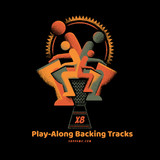An Insider Guide to Claves
Claves are one of the most basic and one of the easiest to play hand percussion instruments. They consist of two wooden sticks, or dowels, that can be struck together to produce a loud clicking sound. Variations of this simple instrument can be found in almost all cultures and musical styles; however these instruments are most commonly used in connection with Cuban music. Today the claves are a staple of modern Latin American music and dance. The word clave means “keystone” in Spanish, suggesting that this instrument is a foundational element to this type of music.
The history of slavery is a history of diaspora and often of cultural mingling. This history had a profound impact on the musical world at large. African slaves traveled to Cuba, a former Spanish colony, in the 16th and 17th centuries, bringing their traditions and musical styles with them. It is thought that cultural mixing of African rhythms and songs with Spanish musical traditions came to influence the musical style and production in Cuba. The claves are thought to have been invented by African slaves working in Cuban shipyards. The earliest claves would have been made from the wooden pegs that were used for the repair and construction of ships. These instruments became important in keeping the rhythm and beat of a song in a time and place where musical instructions weren’t written down. This hand percussion instrument would have been vital in keeping a group of musicians together through an emphasis on beat and time.
While the claves may seem like an overly simple instrument, getting the most out of the claves is an art. It can take time and practice to control and modify the sounds produced by the claves. There are also complex rhythms that can be learned on the claves. Claves can come in a variety of shapes and sizes that each produce unique sounds. Claves can be cylindrical or they can have tapered, rounded edges, or even carved middles that give them individual sound properties. They are usually made of hard wood such as ebony or rosewood, but also come in synthetic materials such as plastic and fiberglass. Modern claves are also frequently hollow. This allows the sound to resonate and amplify when the instrument is struck.
The Son Clave is the name of one of the most popular musical patterns played on the claves. This pattern forms the basis for the Cuban Son music and dance. This pattern goes by other names in other cultures. The Son Clave is also the main clave pattern for the Cha-Cha, Merengue, the Guajira, and a number of other musical styles. The other major clave rhythm is the rumba clave.
The clave is a lively instrument that provides the rhythmic backbone for a wide variety of musical styles. It may seem like a very simple instrument to play, but it does take a little practice to master. Once mastered, however, the clave can be a fun way to add depth and rhythm to your musical performance.
Recent Posts
-
X8 Drums Play-Along Backing Tracks
The new X8 Play-Along Series is being produced for our musician friends wanting a fresh way to work …9th Feb 2025 -
What is the Best Size Djembe for Beginners?
If you're new to the world of percussion and interested in learning the djembe, you're in for a t …16th Jul 2024 -
The Benefits of Becoming a Drumming Teacher: Transforming Passion into Profession
Why become a drumming teacher? Becoming a drumming teacher is an excellent way to share your pas …22nd May 2024




